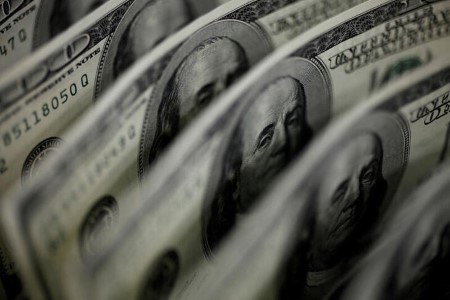




Policy Rate Updates: Double cut finale
 DOWNLOAD
DOWNLOAD

Monthly Economic Update: One for the road
 DOWNLOAD
DOWNLOAD

Inflation Update: Still low, still slow
 DOWNLOAD
DOWNLOAD


US yields higher after data; 10-year poised for biggest monthly drop since 2011

NEW YORK, Nov 30 – US Treasury yields climbed on Thursday, even after economic data provided more evidence that the Federal Reserve could end hiking interest rates, as a sharp drop in yields in recent weeks put the benchmark 10-year US Treasury on pace for its biggest monthly drop since August 2011.
Data showed US consumer spending rose moderately in October, while the annual increase in inflation was the smallest in more than 2-1/2 years. On the jobs front, initial jobless claims rose from the prior week to indicate a softening of the labor market.
The yield on 10-year Treasury notes rose 7 basis points (bps) to 4.34%. For the month, the 10-year yield was down 52.2 bps, on track for its biggest monthly fall since August 2011.
“Way overdone, especially rate cuts as soon as May priced in now, so just giving some of that back, but yields are still lower on the month, it’s just a marginal giveback on the day,” said Kim Rupert, managing director of global fixed income at Action Economics in San Francisco.
“The data (Thursday) morning was quite bond-friendly so I was at first a little bit surprised to see rates go up instead of further down, but, again, come a long way and they’re at lows of the of the month basically, if not longer,” Rupert added.
Softening economic data has heightened expectations that the Fed has completed its rate hike cycle while projecting a greater likelihood that the central bank will need to cut rates in the coming months.
Markets are pricing in a greater than 75% chance that the Fed will cut rates by at least 25 bps in May, according to CME’s FedWatch Tool, up from about 55% a week ago.
Many Fed officials have refused to rule out the possibility that another hike may be needed should the economic data change course, but yields fell sharply earlier this week after Fed Governor Christopher Waller, seen as a hawkish member of the central bank, flagged the possibility of a rate cut if inflation continues to decline.
The yield on the 30-year Treasury bond rose 7 basis points to 4.522%.
On Thursday, Fed officials including New York Fed Bank President John Williams and San Francisco Fed President Mary Daly indicated the central bank was likely done with rate hikes, but left open the possibility of further hikes should progress on inflation ebb.
A closely watched part of the US Treasury yield curve measuring the gap between yields on two- and 10-year Treasury notes, seen as an indicator of economic expectations, was at negative 37.1 basis points after rising to negative 35.5, its shallowest inversion since Nov. 9.
The two-year US Treasury yield, which typically moves in step with interest rate expectations, rose 7 basis points to 4.715%. The yield has tumbled 34.1 bps in November, on pace for its biggest drop since March.
The breakeven rate on five-year US Treasury Inflation-Protected Securities (TIPS) was last at 2.181% after closing at 2.168% on Wednesday.
The 10-year TIPS breakeven rate was last at 2.25%, indicating the market sees inflation averaging about 2.3% a year for the next decade.
(Reporting by Chuck Mikolajczak; additional reporting by Stephen Culp; editing by Jonathan Oatis and Will Dunham)
This article originally appeared on reuters.com





 By Reuters
By Reuters